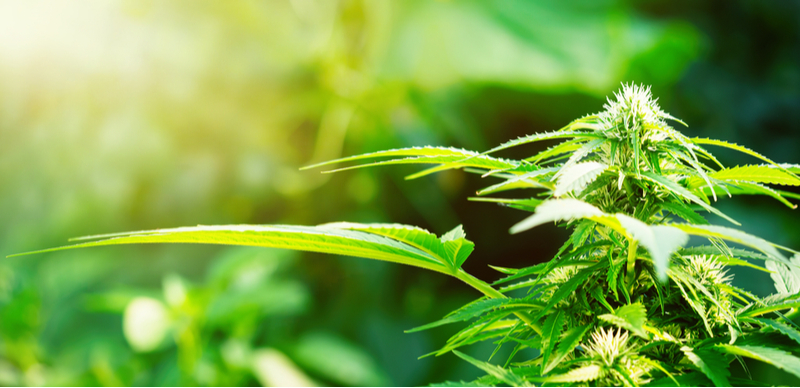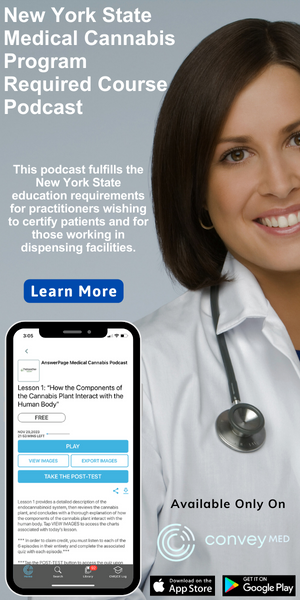
Your Dose of Cannabis Education

Your Dose of Cannabis Education
Only have a minute but want to Learn something every day™? Sign up to receive Your Dose of Cannabis Education, bringing featured content from our course library right to your inbox each day.
Your Dose of Cannabis Education is based on data from the studies and reviews published in the current peer-reviewed medical journals. Whether you are a healthcare provider, patient, caregiver, an individual working in the healthcare sector, or just a curious person, you can benefit from Your Dose of Cannabis Education.
Wake up every morning and get your dose of unbiased evidence-based cannabis education!

 According to the European Pain Federation position paper on the appropriate use of cannabis-based medicines, “a testing period of maximum 3 months should be considered both by patients and prescribers [or recommenders], to assess treatment efficacy and safety. At the end of this testing period, long‐term treatment should only be considered with significant improvement and lack of safety issues….If a satisfactory outcome is achieved, the patient should remain under close medical surveillance for the duration of cannabis‐based medicine therapy… If the predefined treatment goals are not achieved and/or unacceptable burden of side effects occur and/or signs of abuse and misuse are observed, the specific cannabis‐based medicines should be safely withdrawn and alternative options actively explored.”
According to the European Pain Federation position paper on the appropriate use of cannabis-based medicines, “a testing period of maximum 3 months should be considered both by patients and prescribers [or recommenders], to assess treatment efficacy and safety. At the end of this testing period, long‐term treatment should only be considered with significant improvement and lack of safety issues….If a satisfactory outcome is achieved, the patient should remain under close medical surveillance for the duration of cannabis‐based medicine therapy… If the predefined treatment goals are not achieved and/or unacceptable burden of side effects occur and/or signs of abuse and misuse are observed, the specific cannabis‐based medicines should be safely withdrawn and alternative options actively explored.”
 According to Health Canada’s document entitled Information for Health Care Professionals: Cannabis and Cannabinoids, “consumption of … oral cannabis should proceed slowly, waiting a … minimum of 30 minutes, but preferably 3 h, between bites of cannabis-based oral products (e.g. cookies, baked goods) to gauge for strength of effects or for possible overdosing.”
According to Health Canada’s document entitled Information for Health Care Professionals: Cannabis and Cannabinoids, “consumption of … oral cannabis should proceed slowly, waiting a … minimum of 30 minutes, but preferably 3 h, between bites of cannabis-based oral products (e.g. cookies, baked goods) to gauge for strength of effects or for possible overdosing.”
 As stated by the authors of “Brief Commentary: Cannabinoid Dosing for Chronic Pain Management” in the Annals of Internal Medicine, “We advocate a “start-low, go-slow” dosing philosophy, applied to both quantity and adverse effect profiles. We recommend starting with CBD extract, 5 to 10 mg twice daily, to be increased weekly over 1 to 2 months until pain relief is achieved. If CBD extract alone provides insufficient relief, we suggest adding THC, 1.0 to 2.5 mg, and slowly titrating up as needed.” “We do not regard cannabinoids as first-line treatments but as adjuvant therapies to be used before opioids if other options fail to control chronic non-cancer pain. As with any pain medication, cannabinoids should be used as part of an integrated, patient-centric management program, with particular emphasis on appropriate non-pharmacologic treatment options (for example, exercise, cognitive behavioral therapy, and mindfulness). We recommend selecting products verified for safety and potency by third-party testing. We propose that patients use oral formulations (such as capsules) for long-term relief, with tinctures for breakthrough pain. We suggest vaping for patients who prefer to inhale cannabinoids, because this method probably has fewer adverse effects than smoking.”
As stated by the authors of “Brief Commentary: Cannabinoid Dosing for Chronic Pain Management” in the Annals of Internal Medicine, “We advocate a “start-low, go-slow” dosing philosophy, applied to both quantity and adverse effect profiles. We recommend starting with CBD extract, 5 to 10 mg twice daily, to be increased weekly over 1 to 2 months until pain relief is achieved. If CBD extract alone provides insufficient relief, we suggest adding THC, 1.0 to 2.5 mg, and slowly titrating up as needed.” “We do not regard cannabinoids as first-line treatments but as adjuvant therapies to be used before opioids if other options fail to control chronic non-cancer pain. As with any pain medication, cannabinoids should be used as part of an integrated, patient-centric management program, with particular emphasis on appropriate non-pharmacologic treatment options (for example, exercise, cognitive behavioral therapy, and mindfulness). We recommend selecting products verified for safety and potency by third-party testing. We propose that patients use oral formulations (such as capsules) for long-term relief, with tinctures for breakthrough pain. We suggest vaping for patients who prefer to inhale cannabinoids, because this method probably has fewer adverse effects than smoking.”
 Yes, it is suggested that serum transaminases (ALT and AST) and total bilirubin levels be obtained prior to starting treatment with Epidiolex. It has been found that some patients taking Epidiolex experience an increase in serum levels of the hepatic transaminases.
Yes, it is suggested that serum transaminases (ALT and AST) and total bilirubin levels be obtained prior to starting treatment with Epidiolex. It has been found that some patients taking Epidiolex experience an increase in serum levels of the hepatic transaminases. 
 According to a study in humans, pretreatment with CBD does diminish THC’s psychotic effects. This particular study involved 6 healthy volunteers who were given THC intravenously on two separate occasions – once with a placebo pretreatment and once with a CBD pretreatment.
According to a study in humans, pretreatment with CBD does diminish THC’s psychotic effects. This particular study involved 6 healthy volunteers who were given THC intravenously on two separate occasions – once with a placebo pretreatment and once with a CBD pretreatment. New to TheAnswerPage? There’s lots we’d like to share with you and we don’t want you to miss a thing! Be sure to register today for “Your Dose of Cannabis Education” emails where you’ll gain valuable insights in small doses that fit your schedule and also be provided direct access to the archived daily content.


